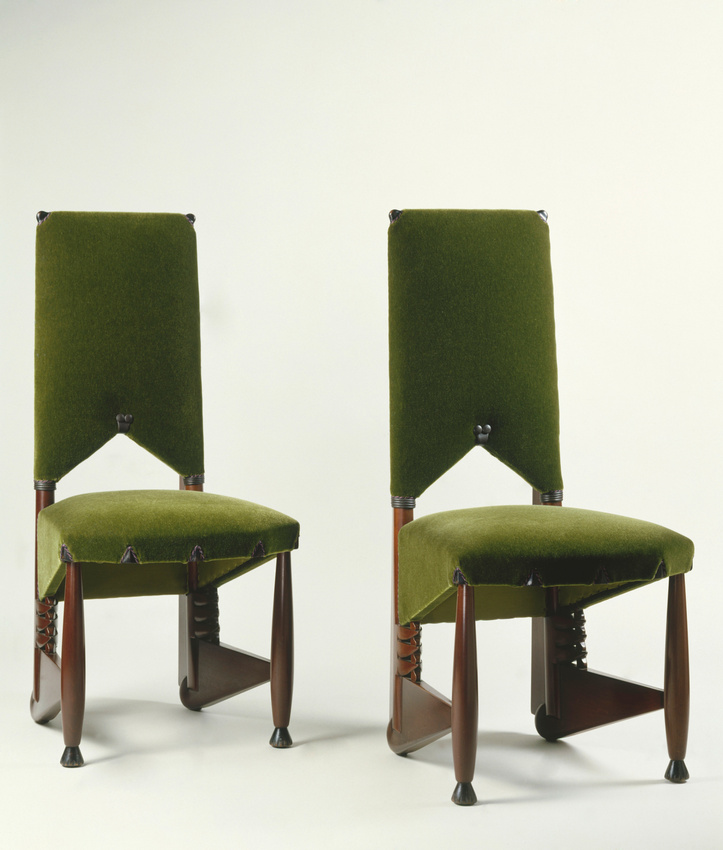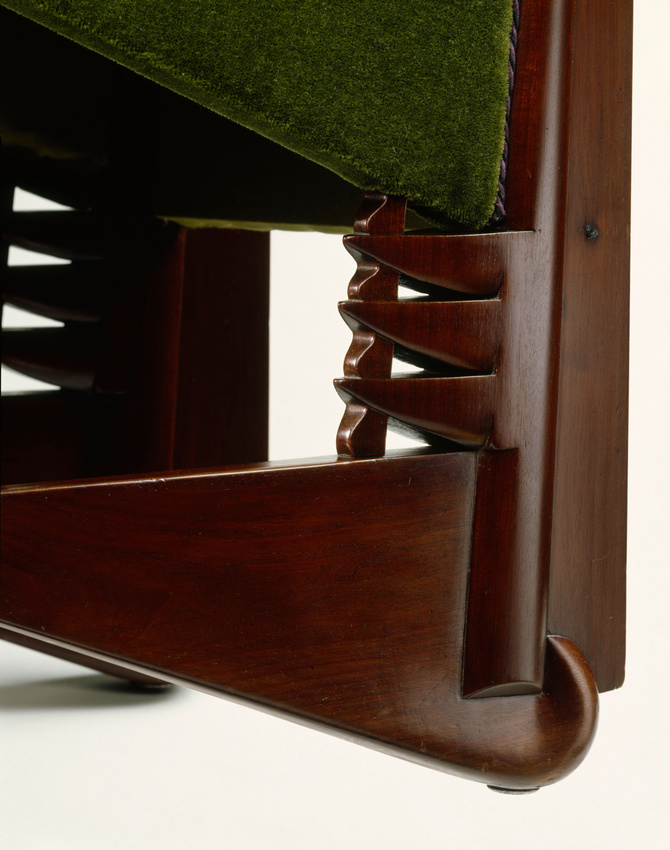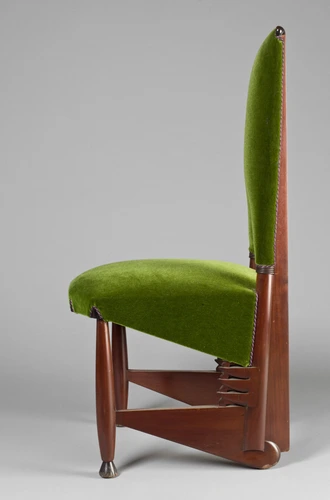Chaise de salle à manger
A major figure of the Amsterdam School, Michel De Klerk strove to transform the Rationalist and neo-Gothic principles of Viollet-le-Duc into a national style. In 1913, he launched himself into his most ambitious project: the Eigen Haard housing development situated in the suburbs of Amsterdam. This was constructed in the form of huge blocks of brickwork with skilfully rounded corners, whose façades, with their Gothic style doors and windows, were decorated with wrought ironwork and abstract motifs. Such a profusion plainly links the Amsterdam School with Art Nouveau.
Eigen Haard's inimitable dynamism, evoking cathedrals and medieval fortresses as much as Scandinavian ships, is found in the furniture designed by De Klerk. In 1915, a "modern" Dutch furniture shop commissioned him to produce a dining and sitting room collection from which this model is taken.
The chair offers affinities with the colossal volumes and highly intricate sculptural lines of the towers, balconies and chimneys of Eigen Haard. Its shape comes from an assembly of parabolic, trapezoid and triangular elements investing the chair with an amazing mobility in spite of the stability of the seat. The design is certainly rational, but the presence of aggressive decorative details - the points of the back legs– inspired, it would seem, by the "primitive" arts, suggest mystery or even hostility. These disturbing forms led Wijdeveld, a contemporary theoretician, to compare this furniture with "a piece of music in a minor key that makes sombre predictions".






